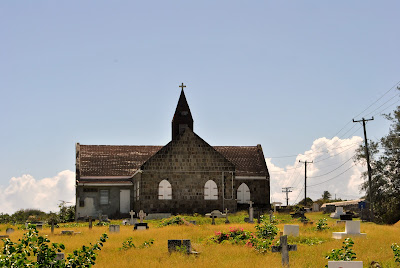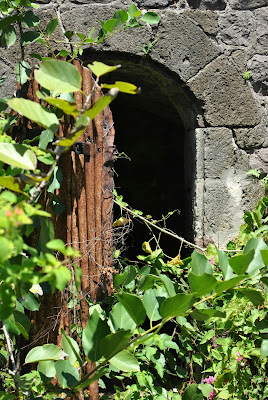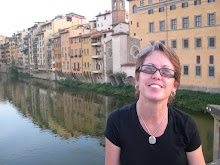 |
| Mt. Nevis Hotel and Restaurant |
On our way back down the mountain we stop at Cottle Church or what remains of it. Built in 1824 by Thomas Cottle, who worshipped here with his family alongside his slaves. It was illegal for slaves to worship at the time so the church was never consecrated. Thomas Cottle died 4 years following its opening.
 |
| Cottle Church |

Our next stop is Herbert’s Beach just south of Nisbet Plantation. Driving down the dirt road there is a huge fire burning as well as a backhoe digging up trees; looks like the area is to be developed, and it is no wonder. The water and view here are gorgeous. If it wasn’t for the dilapidated bar and surrounding garbage it would be a wonderful destination for a day of swimming/snorkeling and sunning.
 |
| Herbert's Beach |
Continuing south on the main road, we briefly stop at St. James Anglican Church which houses the only black crucifix in the Caribbean…
 |
| St. James Anglican Church |
 |
| Eden Brown Estate |
The highlight of the day is the New River and Coconut Walk Estates on the east side of the island. New River, an old sugar plantation, is full of beautiful, rusty mechanisms from the steam-powered mill. We are inside the mill taking photos, when I look up and realize just how precarious the tin roof is. Right above my head dangles a large, sharp piece of wood; the wind is blowing making the wood creek and the tin screech. Perhaps it is best to move on.
 |
| New River Estate |
We are walking down the trail toward the sea when a large group of goats round the corner. Seeing us, they turn tail and head back the other way. I do not even have time to think about grabbing my camera. We pass a cotton field on our left and then we are at Coconut Walk (once upon a time coconut trees lined the drive). There is a large lime kiln, still in use today, where coral is fired into lime to be added to concrete for construction.
Further down the road we see the dwellings at the edge of the ocean that are part of the Arawak Indian site. The road we have traveled down is obviously not made for cars, so Mr. Man and I take the road on the other side of the cotton field to see if it will accommodate a car, as the ruins are too far to walk to, but we are eager to continue exploring. Luckily, this road leads back to the dirt road where we have parked the car and we thankfully climb aboard and turn on the AC before heading toward the sea. When we get close we see wild donkeys who are watching us closely and keeping their distance. The two small buildings are right at the water’s edge.
A little weary from our morning of exploring, we stop for lunch in the open-air restaurant at The Hermitage. What a charming and quaint plantation inn. The main house, of which the restaurant is a part, consists of several rooms: a lovely bar with pictures of the owner’s racing horse, dining room, a lovely sitting room, and a library. All the rooms are decorated with British antiques and are cozy and inviting. I envision having cocktails with fellow guests in the evenings before retiring to one of the colorful cottages dotting the property. The only thing lacking is the beach.
 |
| The Hermitage Plantation Inn |
After our delicious lunch we follow in the footsteps of some other tourists and sneak a peek inside the “Blue Cottage,” and then wander around the grounds. There is a inviting swimming pool behind tall hedges affording bathers privacy from the main house, and several raised beds of vegetables, and a green house. It really is lovely.
In the late afternoon we head back to the house to snorkel. Unfortunately, there is nothing to see in the shallows which extend out a ways from the shore. To really snorkel one must walk out to the reef, which is currently being battered by waves and isn’t inviting at all. We settle for swimming instead. The water is cool and refreshing, and we find ourselves carried southward. Trying to swim back toward the tiny bit of sand in front of our house, we find that we can make no headway against the pull of the tide. We are forced to swim to shore and then walk back in the shallows.
Time for a nap before dinner.























 Posted by
Posted by


No comments:
Post a Comment